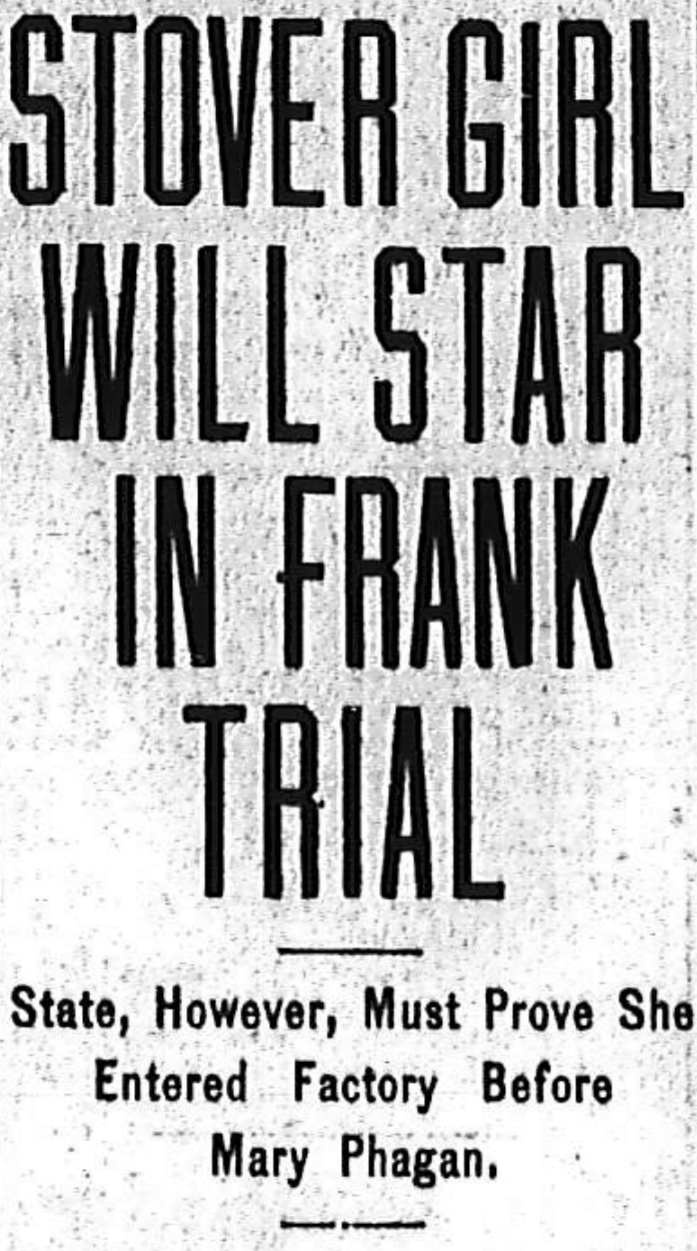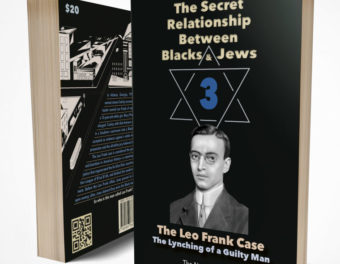
Another in our series of new transcriptions of contemporary articles on the Leo Frank case.
The Atlanta Georgian
Thursday, June 26, 1913
State, However, Must Prove She Entered Factory Before Mary Phagan.
With the selection of the court room made Thursday, all is virtually in readiness for the trial of Leo M. Frank, accused of strangling Mary Phagan. The venire of jurymen has been selected and July 28 is fixed as the date, and both sides have announced they are ready to go into court.
A definite decision was reached by Judge L. S. Roan to hold the trial on the first floor of the old City Hall building. The decision was reached after a conference with Solicitor General Dorsey, and it was represented as impracticable to hold the trial in the small and not well-ventilated court room in the Thrower building.
The State is maintaining its determined attitude toward the subpenas duces tecum issued by the defense. Frank A. Hooper, assisting in the prosecution, has branded them as a palpable trick to discredit the testimony of the State’s witnesses.
Girl Star Witness.
The witnesses will be present with the affidavits called for, but a hot fight will be put up by Solicitor Dorsey and Attorney Hooper to prevent their use by the defense.
Monteen Stover, a timid little 14-year-old girl, will be a star witness in the trial [of Leo M. Frank July 28 on the charge of strangling Mary Phagan in the National Pencil Factory],* according to all indications Thursday.
[The frequency with which she has been called upon to repeat her story of going to the factory on the day of the crime and finding Frank absent from his office is taken as an almost certain indication that the prosecution regards her statements of the utmost importance.]
The State, if it is able to establish that Monteen Stover entered the factory on the day of the crime just after Mary Phagan went inside, will have scored a most significant victory. The evidence will still be circumstantial, it is true, but it will be of greater weight even than the weird stories of the negro sweeper, Jim Conley, who has sworn that he aided Frank in disposing of the body.
Adds to Mystery.
Her story; however, until it is substantiated or disproved in court, only adds to the mystery of a crime which already abounds in baffling and mysterious phases. Her appearance on the witness stand may mean everything or nothing—because there is the startling fact that every indication points to Monteen Stover having entered the factory BEFORE Mary Phagan.
Monteen Stover is the daughter of Mrs. Homer Edmonson, of 171 South Forsyth Street. She formerly was employed at the pencil factory, and on the Saturday of the murder went to the building to get her money. She said that she arrived there at 12:05 and remained about five minutes. She said that Frank was not in his office and that she was not able to find him.
Pitted against the declaration of the little girl is the statement of Frank that he was in his office at the time. One of the two apparently has spoken falsely or mistakenly. It is the theory of the State that Mary Phagan had preceded Monteen Stover into the factory; that Frank had attacked her probably in the metal room, and that this is the reason the Stover girl was unable to find Frank in his office when she was in the building from 12:05 to 12:10.
[Where the Case Is Hit.]
[Should the State be able to impress the jury that this was the actual series of events, the prosecution will argue that Mary Phagan left the office in company with Frank and went to the metal room.]
[But the theory of the State is once assailed by what appears to be practically certain evidence that as a matter of fact, Monteen Stover was at the factory before Mary Phagan entered. If this is the case, Frank’s absence from his office could not have had any significance, for Mary Phagan was not yet there.]
The Phagan girl left her home at 11:50. She lives in Bellwood and the ride to town takes more than 15 minutes. The time that she left the car in the city is fixed by William M. Matthews, Motorman No. 1447, of the Cooper and Hendricks Streets run, who says that his car arrived at Broad and Marietta Streets that day between 12:07 and 12:10 o’clock.
If Mary Phagan had hurried, she barely could have got to the factory by the time the Stover girl was leaving, if this testimony can be relied upon implicity [sic]. The Stover girl’s story falls down utterly, so far as its value is concerned, therefore, if Mary Phagan did not come into the factory until after the Stover girl had left.
[There still remain the conflicting stories of the Stover girl and Frank, even though they can not have a direct bearing on the case. The Stover girl says Frank was not in his office and he declares that he was there until he went to the fourth floor to see Arthur White and Harry Denham.]
*Editor’s Note: Bracketed text appears only in the Afternoon and/or Evening versions of the Georgian.
* * *
